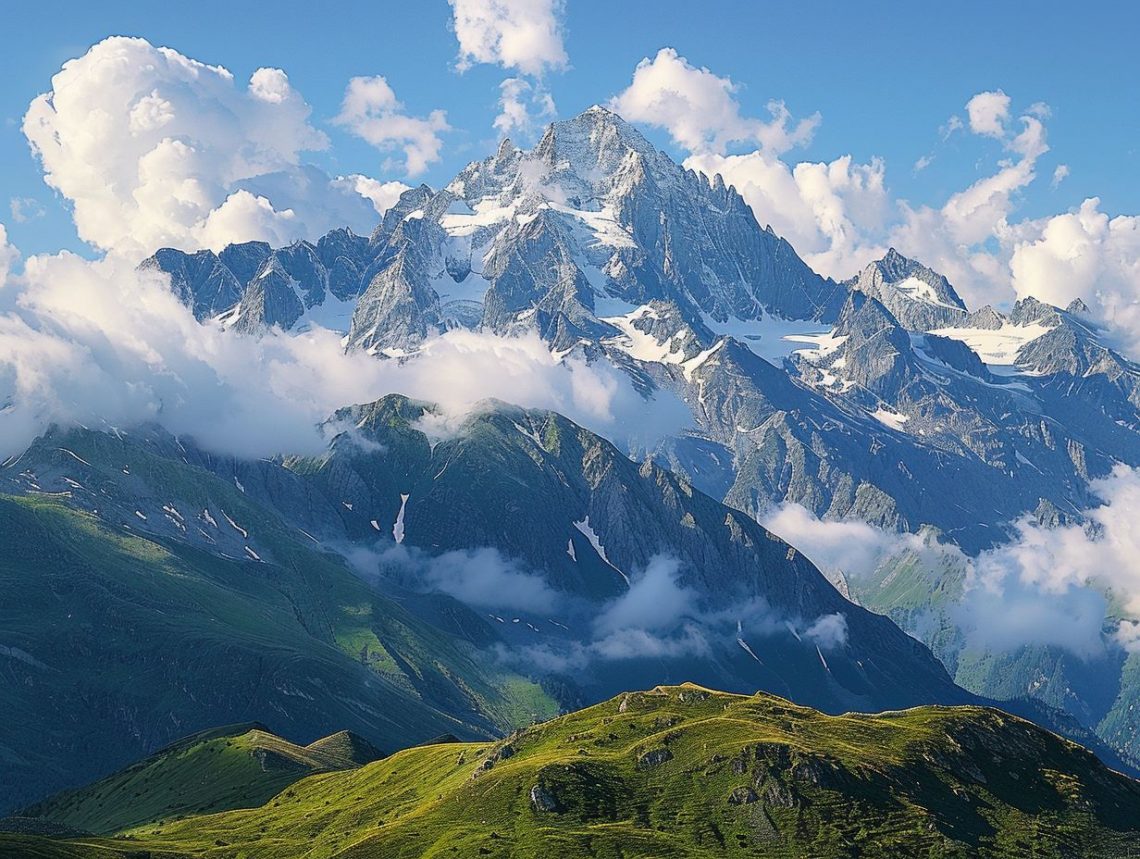
Tallest Mountains In Europe
Have you ever wondered what truly defines a mountain?
In this article, we will take a closer look at the tallest mountains in Europe, including iconic peaks such as Mount Elbrus, Mont Blanc, and the Matterhorn.
Explore how these majestic mountains were formed, the challenges and dangers of climbing them, and learn about famous climbers and records set on these towering peaks.
Get ready to be inspired by the beauty and majesty of Europe’s tallest mountains.
Key Takeaways:
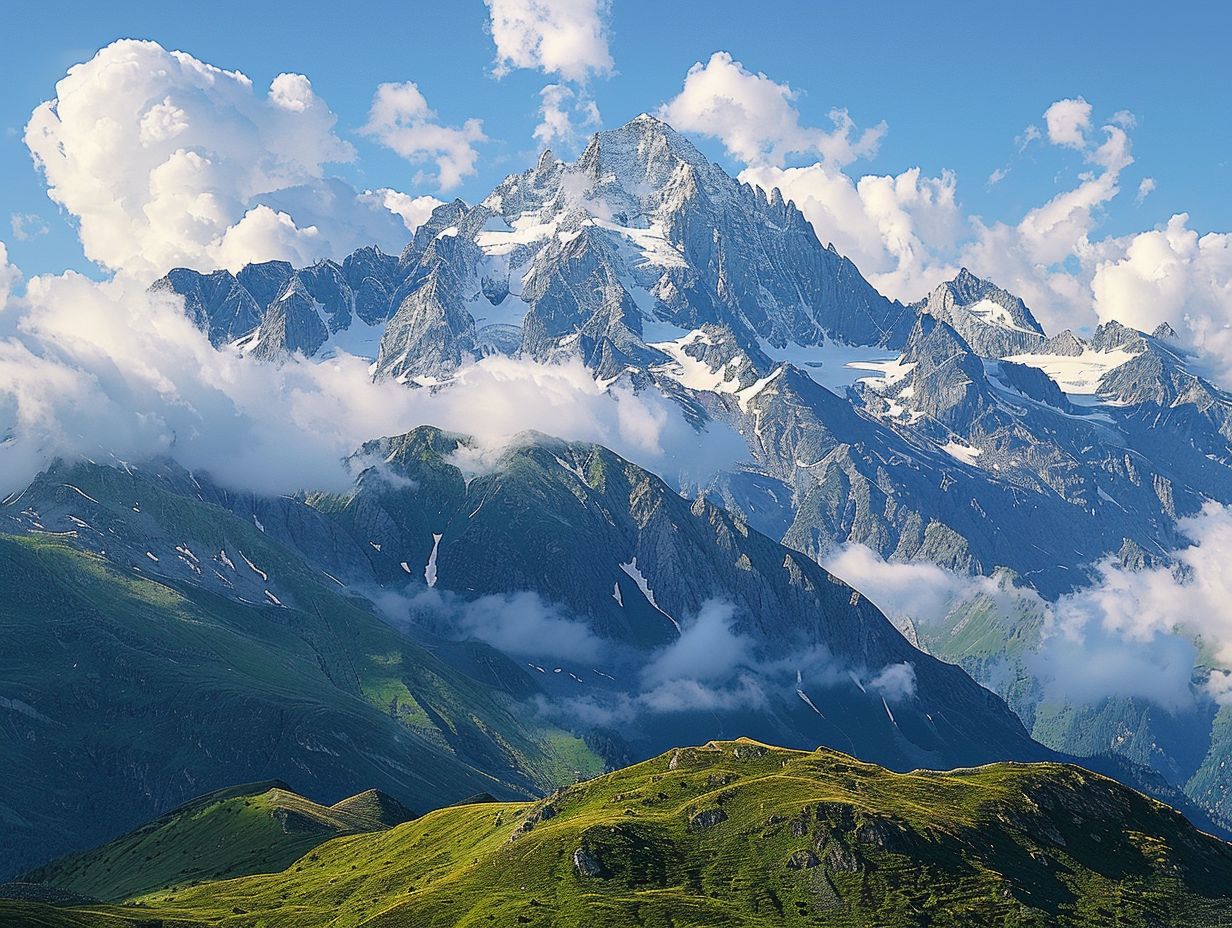
- Mount Elbrus is the tallest mountain in Europe, standing at 18,510 feet.
- Mont Blanc, the tallest mountain in the Alps, is a popular destination for climbers.
- The Matterhorn, known for its distinctive shape, is one of the most challenging mountains in Europe to climb.
What Defines a Mountain?
Mountains are large landforms that stretch above the surrounding land in a limited area, usually in the form of peaks.
In Europe, the Caucasus Mountains boast some of the highest elevations, spanning across countries like Russia and Georgia.
These mountains act as physical boundaries between continents and play a crucial role in influencing weather patterns and biodiversity.
The presence of the Caucasus Mountains in both Europe and Asia highlights the unique position they hold, showcasing the seamless intersection of two continents.
The Tallest Mountains in Europe
Europe is home to several towering peaks, with the Caucasus Mountains hosting Mount Elbrus, the highest point on the continent.
Other prominent summits include Mont Blanc, Matterhorn in the Swiss Alps, making Europe a coveted destination for climbers seeking to conquer the Seven Summits.
1. Mount Elbrus
Mount Elbrus, located in the Caucasus Mountains and spanning Russia and Georgia, stands as the highest peak in Europe.
Its twin summits, both volcanic cones, soar above the surrounding landscape with a majestic presence.
The western summit, standing at 5,642 meters (18,510 feet), slightly surpasses its eastern counterpart.
Mount Elbrus holds immense cultural and historical significance, being a prominent feature in local folklore and myths.
Climbers from all around the globe are drawn to its challenging ascent, navigating its steep slopes and crevassed glaciers.
2. Mont Blanc
Mont Blanc, situated in the Alps, is renowned for its challenging climbing routes and breathtaking summit views, attracting climbers from around the globe.
Nestled in the Alps, Mont Blanc majestically rises to 4,808 meters, making it the highest peak in Western Europe.
It’s formidable reputation for climbers stems from the mix of rocky ascents, steep ridges, and unpredictable weather conditions.
The allure of conquering this iconic mountain lies not just in the physical challenge but also in the stunning panoramas that await those who summit.
3. Mount Blanc de Courmayeur
Mount Blanc de Courmayeur, a sub-peak of Mont Blanc, offers climbers a unique and challenging ascent, adding to the allure of conquering the various peaks in the region.
Standing proudly at a height of 4,748 meters, this imposing peak is not for the faint-hearted.
Climbers are drawn to its steep rock faces, exposed ridges, and unpredictable weather conditions, testing their skills and endurance to the limits.
The ascent to Mount Blanc de Courmayeur demands technical proficiency, mental resilience, and a deep appreciation for the breathtaking alpine environment.
Despite it’s challenges, reaching the summit of this peak rewards climbers with unparalleled views of the sweeping Mont Blanc massif.
4. Dufourspitze
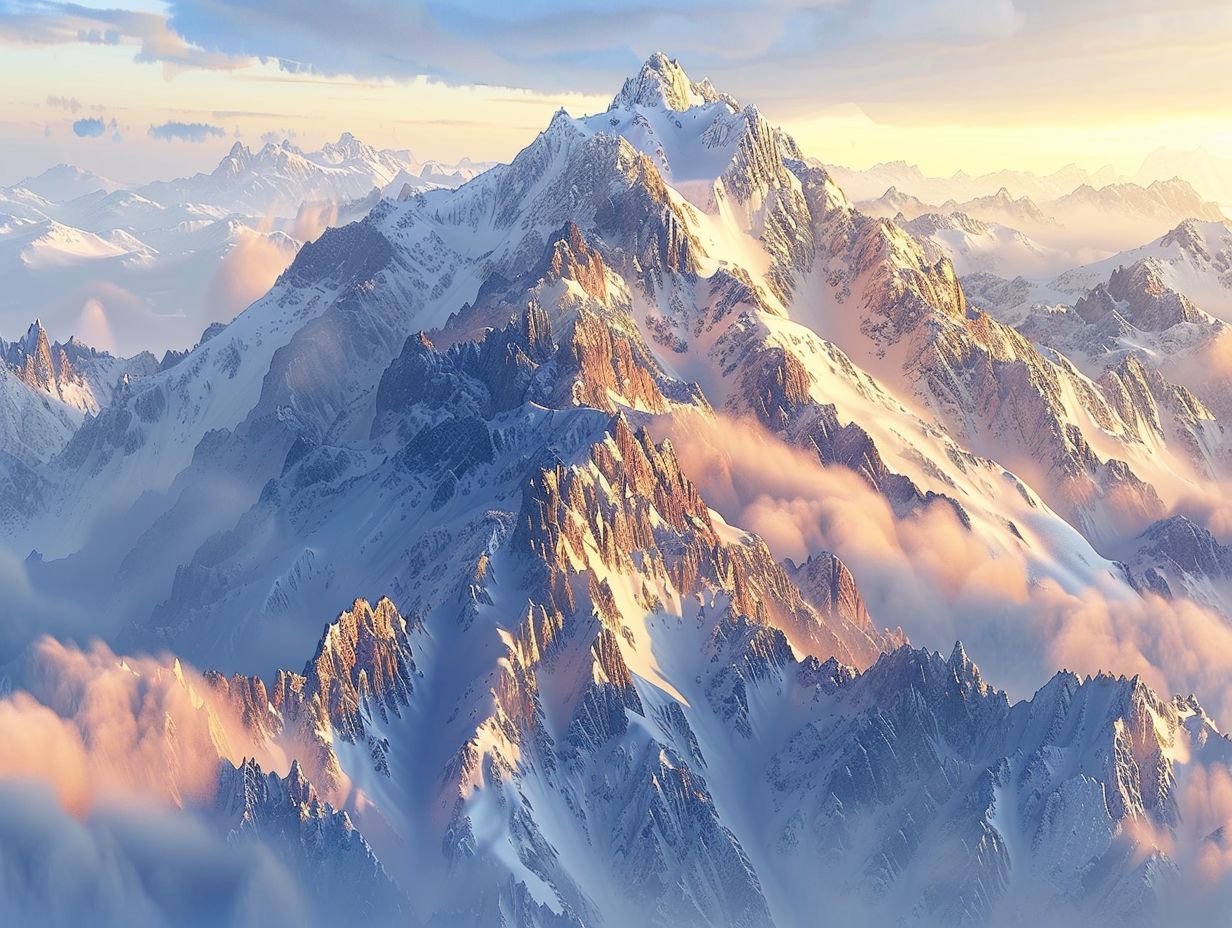
Dufourspitze, a striking peak in Europe, offers climbers a challenging and rewarding expedition, showcasing the diverse climbing opportunities available in the continent.
Standing at an impressive 4,634 meters above sea level, Dufourspitze is the highest point in Switzerland and one of the most sought-after peaks for mountaineers.
Its awe-inspiring beauty and technical challenges make it a must-climb for those seeking thrilling adventures amidst breathtaking alpine scenery.
The ascent to Dufourspitze involves navigating glacier-covered slopes, rocky ridges, and possibly crevassed terrain, providing climbers with a mix of ice, rock, and snow climbing experiences.
This variation in terrain demands a wide range of climbing skills, from ice axe techniques to rock scrambling, attracting climbers looking to test their abilities.
5. Dom
Dom, a majestic peak in Europe, beckons climbers with its impressive height and distinctive terrain, offering a unique climbing experience in the continent.
Standing proudly at 4,545 meters (14,911 feet) above sea level, Dom is the highest mountain situated entirely within Switzerland.
It’s snow-capped summit and rugged rock faces present a challenging yet rewarding climb for mountaineers.
The mountain’s terrain features a mix of steep ridges, glaciers, and icy slopes, providing a diverse and exhilarating experience for climbers of various skill levels.
Dominating the landscape with its grandeur, Dom is a magnet for those seeking adventure and a true test of their mountaineering abilities.
6. Weisshorn
Weisshorn, a notable peak in Europe, presents climbers with a challenging and exhilarating ascent, showcasing the varied landscapes and climbing opportunities in the region.
The Weisshorn stands tall at an impressive altitude, reaching 4,506 meters above sea level.
This majestic mountain is renowned for its steep, pyramid-shaped peak that attracts climbers from around the world.
The ascent of Weisshorn is characterized by rugged terrain, icy ridges, and unpredictable weather conditions, offering a true test of mountaineering skills.
Climbers must navigate through snowfields, rocky outcrops, and glaciers, making the journey both physically demanding and mentally stimulating.
7. Finsteraarhorn
Finsteraarhorn, one of Europe’s prominent peaks, entices climbers with its rugged beauty and demanding routes, adding to the allure of exploration.
Standing proudly at 4,274 meters above sea level, Finsteraarhorn dominates the Bernese Alps in Switzerland, captivating adventurers with its majestic presence.
The mountain’s challenging routes, including the famous Fiescher Ridge, test the skills and endurance of climbers, attracting those who seek a true alpine challenge.
Finsteraarhorn offers a unique opportunity for mountaineers to traverse its icy slopes and rocky cliffs, rewarding them with breathtaking views.
Its remote location and pristine wilderness add to the allure, making it a coveted destination for those in search of an unforgettable climbing experience.
8. Grand Combin
Grand Combin, an impressive peak in Europe, offers climbers a rewarding venture with its stunning views and diverse climbing routes.
Located in the Pennine Alps of Switzerland, Grand Combin stands at a majestic height of 4,314 meters, making it a prominent destination for mountaineers.
Panoramic views from the summit stretch across the surrounding glaciated landscapes, providing a breathtaking panorama of the region.
Climbers are presented with a plethora of climbing routes catering to different skill levels, from relatively straightforward routes to more technical.
9. Jungfrau
Jungfrau, a renowned peak in Europe, captivates climbers with its majestic presence and challenging climbing opportunities, offering a memorable experience.
Its distinct pyramid-shaped summit rises majestically, drawing climbers from all over the world seeking a true test of their skills and endurance.
Climbing Jungfrau is not for the faint-hearted; its steep ascents, exposed ridges, and unpredictable weather conditions pose significant challenges.
The allure of conquering one of the most iconic peaks in the Swiss Alps, surrounded by the breathtaking scenery of the Bernese Oberland, is undeniable.
The spectacular views from the summit, overlooking the Aletsch Glacier and neighboring peaks like Eiger and Mönch, reward climbers with a sense of accomplishment.
10. Matterhorn
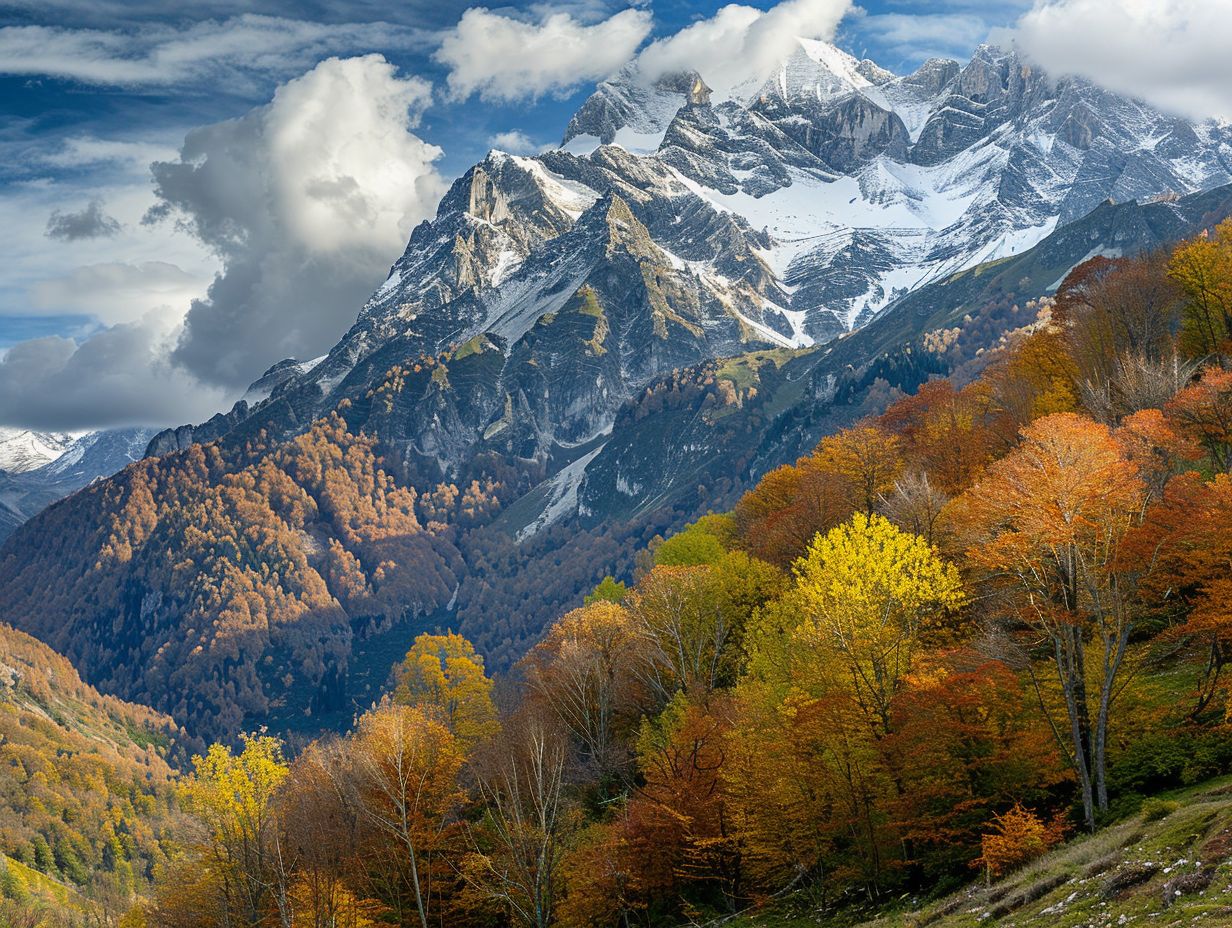
Matterhorn, an iconic peak in the Swiss Alps, allures climbers with its distinctive pyramid shape and challenging climbing routes.
The Matterhorn’s unique features, such as its four steep faces pointing towards the compass directions, create both striking visuals and technical challenges for climbers.
It’s sharp ridge lines and unpredictable weather conditions add to the difficulty of summiting this majestic mountain.
The mountain’s popularity among climbers is also augmented by it’s rich history, including the first ascent in 1865 by Edward Whymper’s team.
The blend of natural beauty and historical significance makes Matterhorn a dream climb for many adventurous souls.
How Were These Mountains Formed?
The towering mountains of Europe, like the Caucasus and Alps, formed from tectonic plate collisions, crustal uplift, and erosion, sculpting their majestic peaks.
These mountains serve as a testament to the powerful forces that have shaped the Earth over millions of years.
The collision of the Eurasian and African plates has led to the formation of the Caucasus range, a rugged landscape that stretches between the Black and Caspian Seas.
Meanwhile, the Alps, Europe’s most renowned mountain system, were sculpted by the convergence of the African and Eurasian plates.
Geological processes such as folding, faulting, and volcanic activity have played a crucial role in the formation of these mountain ranges.
The gradual uplift of crustal blocks from tectonic plate compression formed high peaks in Europe. Erosional forces like glaciers, rivers, and wind further shaped these mountains into their present grandeur.
Climbing the Tallest Mountains in Europe
Climbing the tallest mountains in Europe, presents climbers with a mix of challenges ranging from technical routes to high altitudes, testing their skills and endurance.
Mount Elbrus, situated in the Caucasus Mountains, stands proudly as Europe’s highest peak, beckoning climbers with its icy slopes and unpredictable weather.
The ascent up Mount Elbrus demands a careful balance of technical prowess and physical stamina, with climbers navigating crevasses and enduring frigid temperatures.
Mont Blanc, towering in the French Alps, captivates adventurers with its steep cliffs and exposed ridges.
Climbing this majestic peak requires precise rock climbing skills and acclimatization to the thin air at high altitudes, as well as a keen sense of direction to navigate.
Challenges and Dangers of Climbing the Tallest Mountains in Europe
Conquering the tallest mountains in Europe is fraught with challenges and dangers including altitude sickness, extreme weather conditions, and unpredictable terrain.
Altitude-related risks pose a significant threat to climbers attempting these formidable peaks, with conditions such as hypoxia and pulmonary edema.
The harsh weather conditions in the European mountain ranges can change unexpectedly, bringing storms, blizzards, and freezing temperatures.
The technical challenges involved in summiting these mountains require advanced climbing skills and equipment, including navigating crevasses, icefalls, and steep rock faces.
Climbers must be prepared to face the steep glaciers and rocky outcrops that add to the unpredictable nature of the terrain and increase the risk of accidents.
Famous Climbers and Records on the Tallest Mountains in Europe
Several renowned climbers have etched their names in the history of mountaineering by conquering the tallest mountains in Europe.
Among these legendary climbers is Reinhold Messner, whose unparalleled solo ascent of the North Face of the Eiger in the Swiss Alps.
Similarly, the Polish climber Jerzy Kukuczka’s speed ascent of the South Face of Mount Elbrus in a mere five hours revolutionized alpine style climbing techniques.
The Italian pioneer Walter Bonatti’s daring routes on Matterhorn set new standards for difficulty in high-altitude climbing.
Conclusion
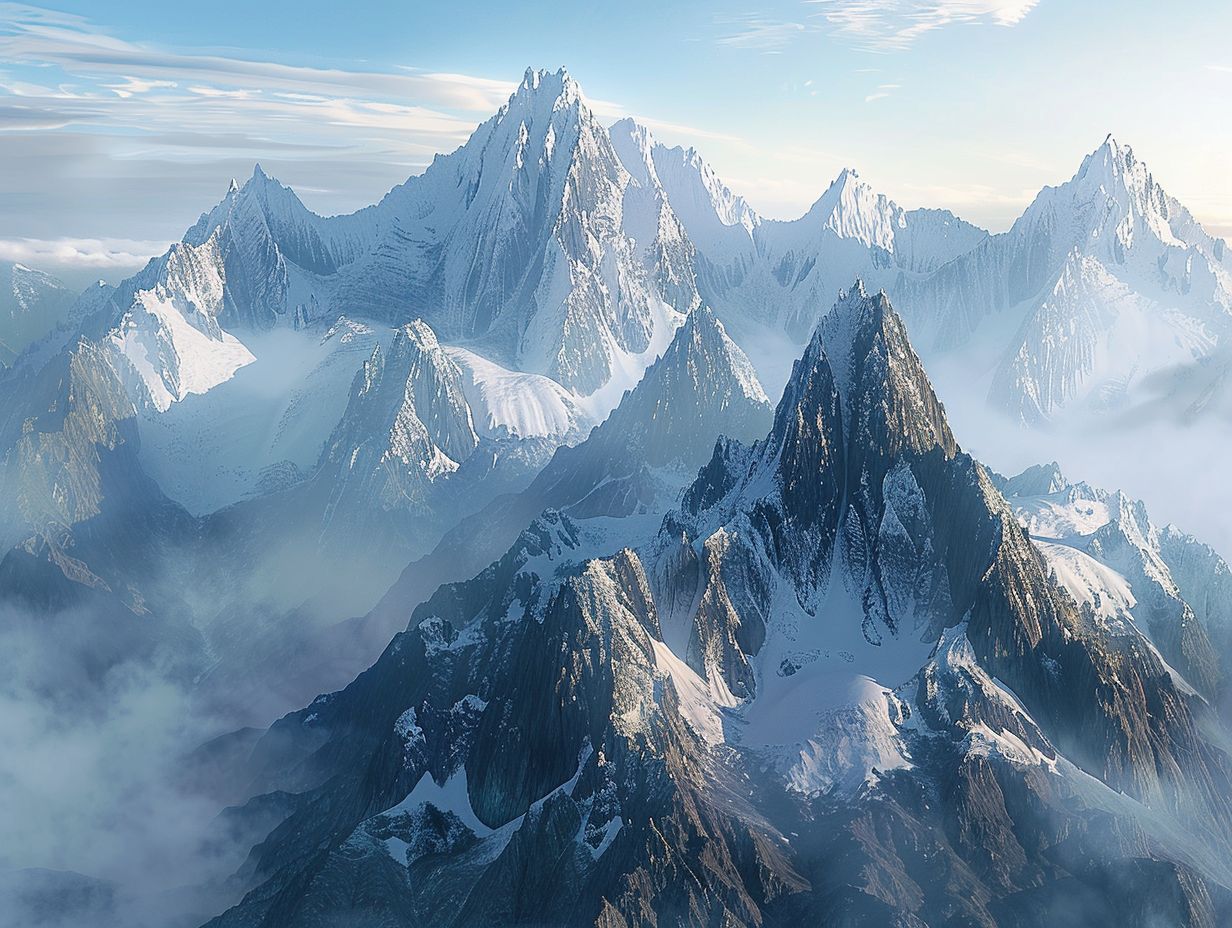
The towering peaks of Europe stand as testaments to the beauty and majesty of the continent’s mountainous landscapes.
Mount Elbrus, the highest peak in Europe, with its snow-capped summit rising to 18,510 feet, symbolizes the continent’s rugged splendor.
Mont Blanc’s iconic white peak at 15,781 feet showcases the allure of the French-Italian border region.
The jagged, distinctive silhouette of Matterhorn, a challenging climb at 14,692 feet, adds a touch of mystique to the Swiss Alps’ panorama.
Frequently Asked Questions
1. What are the tallest mountains in Europe?
A: The tallest mountains in Europe are Mount Elbrus, Mont Blanc, and Mount Blanc de Courmayeur.
2. Which country is home to the tallest mountain in Europe?
A: Russia is home to the tallest mountain in Europe, Mount Elbrus.
3. How tall is Mount Elbrus?
A: Mount Elbrus reaches a height of 18,510 feet (5,642 meters), making it the tallest mountain in Europe.
4. What is the second tallest mountain in Europe?
A: The second tallest mountain in Europe is Mont Blanc, located on the French-Italian border, with a height of 15,774 feet (4,808 meters).
5. Where is Mont Blanc de Courmayeur located?
A: Mont Blanc de Courmayeur is located in the Graian Alps on the border of Italy and France.
6. How many of the tallest mountains in Europe are located in the Alps?
A: Two of the tallest mountains in Europe, Mont Blanc and Mont Blanc de Courmayeur, are located in the Alps.